
by Erik Lovestrand | Jun 30, 2017
Imagine yourself as an early settler, migrating with your family into the area known as La Florida, with the hope of staking a claim and building a new life. You’ve heard stories of horrendous mosquitos, fierce native peoples, deadly snakes, and giant alligators. Regardless, the promise of abundant fish and wildlife, a year-round growing climate and a chance to start anew, override any doubts you might have and you pack your wagon, hitch up your mules and head south with great anticipation.
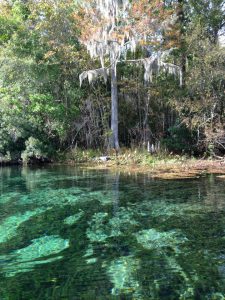
Florida’s springs are world famous. They attracted native Americans and settlers; as well as tourists and locals today.
Photo: Erik Lovestrand
Well, the mosquitos have been horrendous, one of your mules was bitten by a rattlesnake but survived, and one of your hounds was taken by an alligator at a river crossing. You are in your second month of travel and you’ve come into a strange area of forest that stretches for miles in all directions. Deep, white sands clutch at your wagon wheels and make tough going for the mules. The land is forested by tall majestic pines and the terrain is gently rolling with an open view across a landscape dominated by wiry grasses and other low growing herbaceous plants. The buzzing sound of insects in the trees makes it seem even hotter for some reason and everyone is tired and thirsty as you spy a dark line of hardwood trees just down-slope. You decide to take refuge in the shade to rest the lathered mules and hope for a water source to refill your dangerously low water cask.
As you walk back under the shady canopy you find an obvious trail that has been used by other humans for generations as evidenced by a deep rut worn into the ground between exposed limestone boulders. As luck would have it, you see the glint of water through the trees ahead. When you clear the trees near the water’s edge you stop abruptly in stunned amazement. The image of a deep blue pool of crystal clear water with a small stream exiting into the woods causes you to shake your head in disbelief. You must be dreaming, as you’ve never witnessed such a magical setting; water boiling out of a gaping hole in the earth, surrounded by white sand and long flat blades of grass waving in the current.
Just about everyone who has visited one of our sparkling North Florida springs probably has a similar, magical recollection of their first encounter. As surface water percolates downward through soil layers and the porous karst (limestone) bedrock, it is filtered and cleaned to incredible clarity. The clear water gushing forth in these artesian-spring flows remains 69-70 degrees year-round in our Panhandle springs. This is due to their open aquifer connection, from which many homes draw their drinking water directly.
However, there are some serious vulnerabilities that our springs are facing regarding the quality of the water that they provide for residents and visitors alike. One issue relates to the numerous sink holes throughout our landscape that also connect directly to this same Floridan aquifer. In the past, many of these holes have served as dumping grounds for items ranging from household garbage, to junk cars, old washing machines and refrigerators, and even the occasional murder victim. Imagine all of the pollutants that end up in our drinking water supply as a result of this. Another concern relates to pollution that goes onto the ground surface and ends up in the aquifer. This happens via runoff from paved surfaces, sediments and excess fertilizers or pesticides from the landscape, or even the intentional application of treated wastewater in spray fields located in a “spring-shed.” Water clarity and quality at many of our well-known springs has suffered from excess nutrients that cause algal growth and other unwanted, nuisance plant proliferation.
As we gain a better understanding of how water moves through our landscape and ends up flowing from these natural springs, we should become better stewards by minimizing our human impacts that degrade spring water quality. Let’s keep the magic alive for all of our future generations of nature explorers.
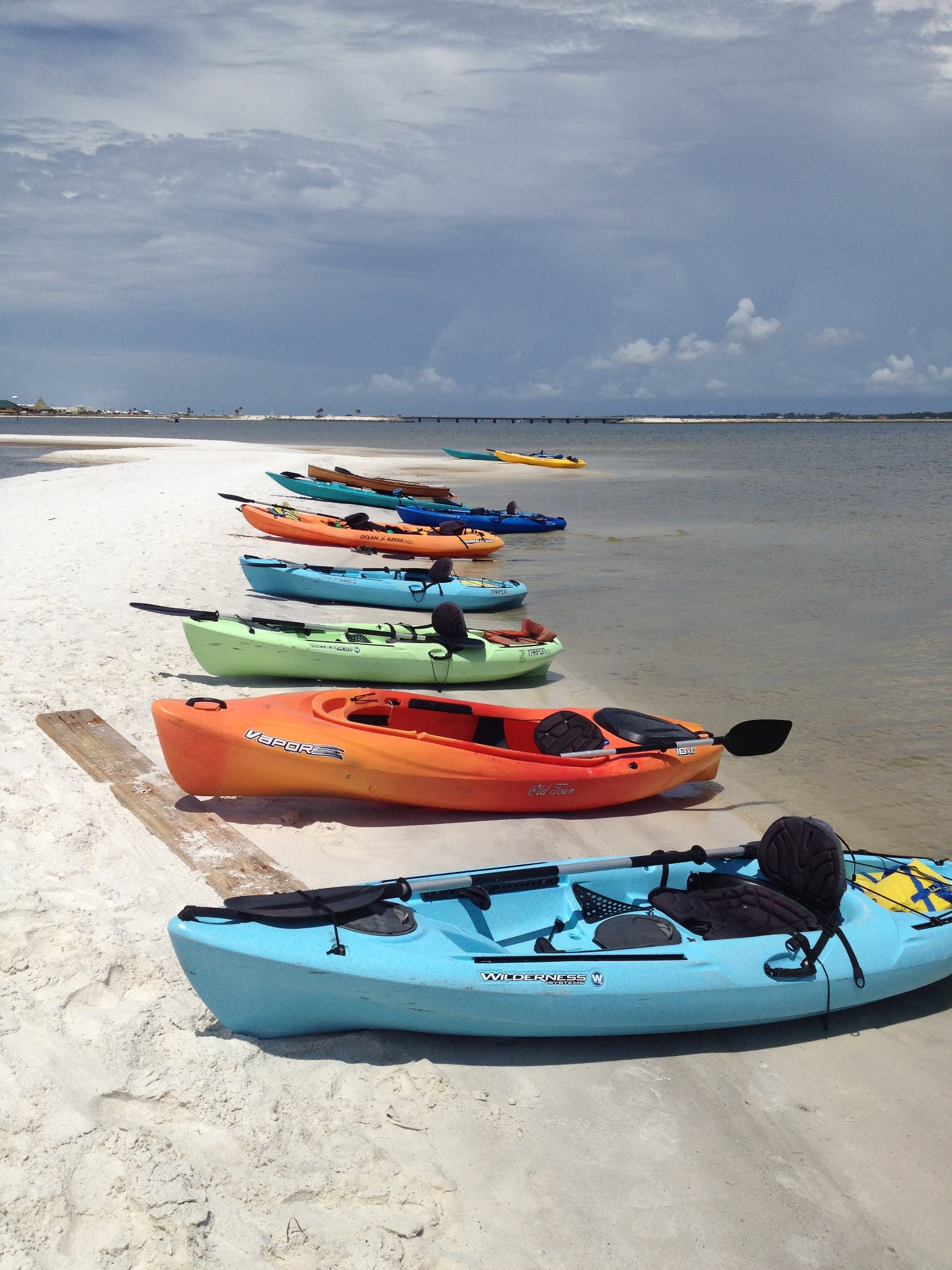
by Carrie Stevenson | Jun 17, 2017

Wakulla Springs is home to some of the best wildlife watching in all of northwest Florida. It’s not unusual to see manatees, alligators, and dozens of species of birds in one boat trip. Photo credit: Carrie Stevenson
What do you imagine when the word “ecotourism” comes to mind? I know I usually daydream about a trip my husband I took to Costa Rica several years ago, surrounded by lush tropical rainforests as we ziplined through the canopy. I might also think about visiting a National Park, following a neatly maintained trail and stopping at signs placed at just the right spot so visitors can read and understand the special features of the place. Ecotourism, done right, brings a visitor to a unique place, tells its story, and immerses the visitor in the sights and sounds in a way that treads lightly on the location. I always know I’ve been on a good ecotour when I’m tired, happy, and have learned or seen something new.
A colleague with The Conservation Fund has stated that sustainable tourism includes: “Authentic experiences that are unique and specialized to the place (its culture, heritage, and natural resources), emphasizes quality over quantity, focuses on distinctive destinations, unspoiled landscapes, and historic buildings, and differs from mass-market tourism by favoring locally-owned businesses, thereby increasing circulation of money in the local economy.” The truly wonderful thing about ecotourism is that local touch; it exists solely because of the place, so it cannot be outsourced. The best storytellers about those places are usually the people who have lived there for many years, so by its very nature, ecotourism provides jobs for local residents.
Northwest Florida has hundreds of unique locations for visitors and locals to explore…we have centuries-old forts, clear-blue springs, endless rivers and creeks to paddle, trails on the coast and up our modest hills. We have caves and underground caverns, waterfalls, pitcher plant prairies, fishing, wildlife watching, and reefs for snorkeling and SCUBA diving. While millions come here for our quartz-sand beaches, other options that highlight our natural ecosystems deserve more attention and notoriety.
A few years ago, several Extension Agents received funding for a project called Naturally EscaRosa. The idea behind that project was to help promote and create businesses that sustainably used our agricultural and natural resources. The website (www.naturallyescarosa.com) has a list of over 100 businesses and locations where locals and out-of-town visitors can explore the less well-traveled areas of Escambia and Santa Rosa County. As you move east down the coast, Walton Outdoors, the local Visit Florida affiliates, and other privately managed media groups have done similar work, providing a showcase for these treasures in our midst.
This summer, try one of the local ecotourism or agritourism venues near you! Moreover, when your friends and family visit from out of town, encourage them to do the same. We cannot have a successful economy without a healthy ecosystem, and supporting these local and regional businesses is good for both.
For more information on sustainable ecotourism, visit the Society for Ethical Ecotourism (SEE), and for information on starting or visiting an agritourism business, try Visit Florida Farms. And as always, reach out to your local County Extension agents, and we will be more than happy to point you in the right direction to discover to places to explore with your family.
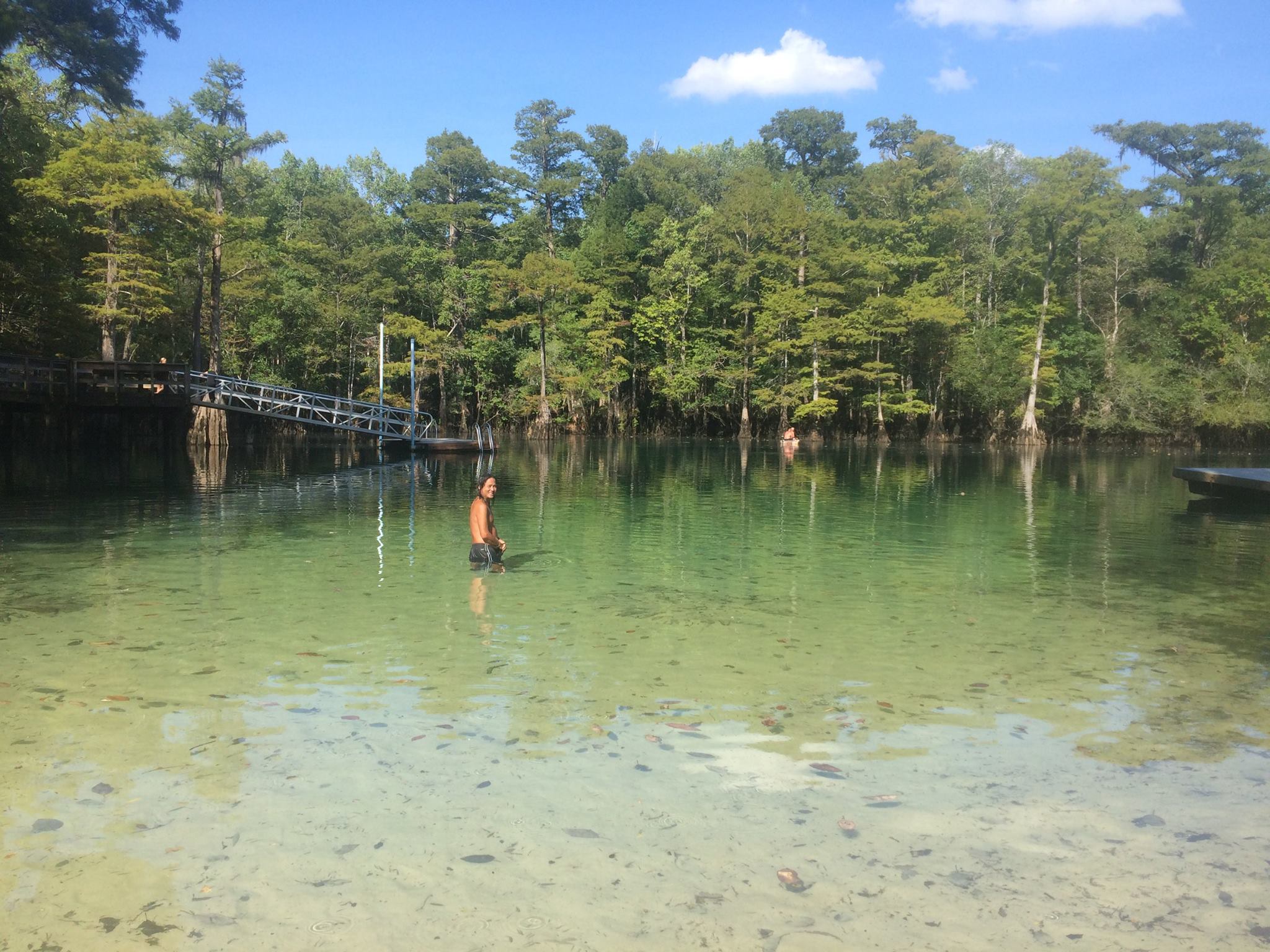
by Laura Tiu | Nov 18, 2016
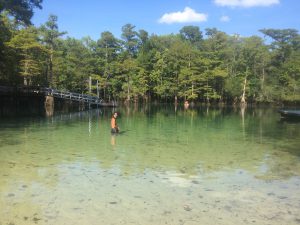
Snorkeler at Morrison Springs – Laura Tiu
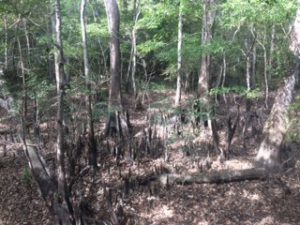
Morrison Springs Bald Cypress
There are over 1000 springs identified in Florida. In the Panhandle, the majority of the springs are karst or artesian springs rising deep from the Floridan Aquafer System within the states limestone base. Springs are unique and can be identified by perennial flows, constant water temperature and chemistry, high light transparency. This yields a freshwater ecology dependent on these features. Springs are classified based upon the average discharge of water but can exhibit a lot of variability based on water withdrawals and rainfall. These springs are some of our most precious water resources, supplying the drinking water our communities rely on, as well as providing great recreation opportunities.
Morrison Springs is a popular spring in northwest Florida and is one of 13 springs flowing into the Choctawhatchee River Basin. It is a large, sandy-bottomed spring surrounded by old growth cypress. The spring pool is 250 feet in diameter, discharges an average of 48 million gallons of water each day from three vents into the Choctawhatchee River as a second magnitude spring. The spring contains an extensive underwater cave system with three cavities up to 300 feet deep and is popular for scuba diving, swimming and snorkeling, kayaking, canoeing and fishing. Historically, it was privately owned and was a popular swimming hole for locals. In 2004, the state of Florida purchased the land containing the spring in the Choctawhatchee River floodplain. The land was leased to Walton County for 99 years. The county created a 161-acre park with a picnic pavilion, restroom facilities and a wheelchair-accessible boardwalk. A down-stream boat ramp provides access to the river away from swimmers and divers. There is no entrance fee.
Morrison Spring is filled with abundant fish and plant life. Fish include largemouth bass, spotted bass, hybrid striped bass, bluegill, sunfish, redbreast sunfish, warmouth, black crappie, striped bass, catfish, alligator gar, bowfin, carp, mullet and flounder or hogchoakers (freshwater sole). It is also home to some nocturnal freshwater eels that swim around the vent and delight the divers. Most are gray, about an inch in diameter and maybe a foot or two long. The spring supports many trees, plants, and grasses including bald cypress, live oak, red maple, pawpaw, red and black titi, Cherokee bean, sweetbay, blackgum, juniper, red cedar, southern magnolia, laurel oak, tupelo, hickory, willow, wax myrtle, cabbage palm, saw palmetto blueberry, hydrangea, St. John’s wort, mountain laurel, water lily, pickerelweed, pitcher plant, broad leaved arrowhead, fern, and moss.
Morrison Springs was previously considered one of the cleanest springs in Florida until 2010 (Florida Springs Initiative). All of Florida springs are currently at risk as the state population continues to increase. Spring flows are decreasing as the result of increasing extraction of groundwater for human uses. Development, and the resultant over pumping, and nitrogen pollution from agriculture both have impacts on the aquifer recharge areas. Existing groundwater pumping rates from the Floridan Aquifer in 2010 were more than 30% of average aquifer recharge (Florida Spring Initiative). The University of Florida IFAS Extension Agents in the Panhandle occasionally conduct interpretive guided tours of the Springs to help citizens understand the importance of protecting this unique water source.
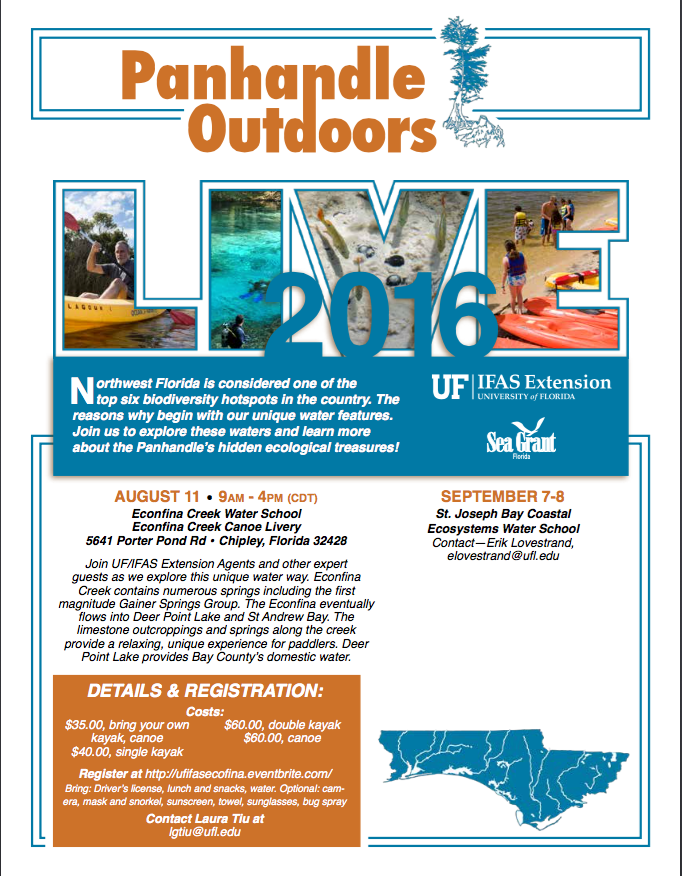
by Rick O'Connor | Jul 27, 2016
Many consider Northwest Florida as the “Canoe Capitol” of the state. We have numerous rivers, creeks, and springs that are great paddling spots. The scenery is great, wildlife is common, and most are easily accessed.
To introduce residents and visitors to the natural history of these waterways, UF/IFAS Extension Agents, and other experts, will lead a paddle trip down one of the many paddling creeks in our area – the Econfina Creek. This creek is one of the more unique ones. The term Econfina is a Muskogean (Creek) term meaning “land bridge” – which apparently existed near the present sight of Highway 20. However, the land bridge is no longer there. This creek runs 22 miles but the upper section is very difficult to paddle. Shallow, fast moving water winds its way through limestone gorges as the land drops at a rate of 7.9 feet / mile (one of the steepest in the state). The lower 6 miles (where our trip takes place) slows, meandering past several springs – including the first magnitude Ganier Springs – limestone outcrops, and lush vegetation – some plant species originate from the Appalachians. There is the chance of seeing some local wildlife including river otters. This lower section is slower and more relaxing and the scenery was graded an “A” by several canoeing guides.
The participants in the program will not only learn about the local natural history of this panhandle waterway but about some of the issues these unique habitats are currently facing. Field experts with the Northwest Florida Water Management District, Florida Fish and Wildlife Commission, and others will share insight to how we can protect these treasured ecosystems. To learn more about the trip contact Dr. Laura Tiu (lgtiu@ufl.edu) or to register visit http://ufifasecofina.eventbrite.com/ .

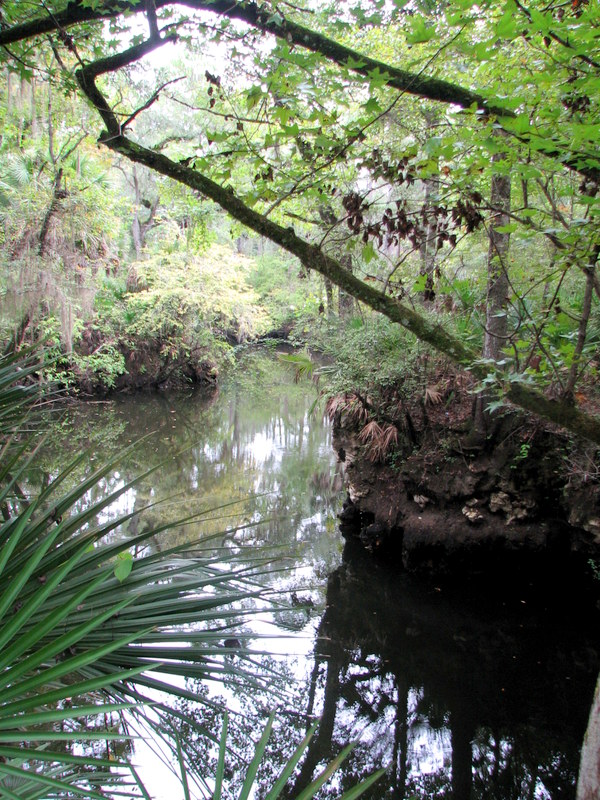
by Will Sheftall | Jan 19, 2016
The Florida Legislature has just convened for the 2016 session, and news from the capitol is already announcing a sweeping water bill on the fast-track to passage. Supporters are quoted as saying it would provide increased protection for certain key water resources in the State such as springs and the Everglades; opponents are quoted as saying that while it doesn’t undo current protections, neither does it go far enough to assure sustainable protection of water resources for Florida’s future.
Thus it seems our legislators and lobbyists are celebrating something that’s a little better than what we’ve got now, but isn’t good enough to get the job done. That doesn’t sound very reassuring. We need a realistic blueprint for how Florida’s ever-expanding population and robust agricultural industry that produces our food can continue to use Florida’s water resources without using them up. The only way that’s going to happen is for citizens concerned about their grandchildren’s future in Florida to become the voices that legislators ignore at the peril of their political future.
So how do you know what to think, and what to say, about the state of water resources where you live – in the Panhandle? Do you understand their current status and vulnerabilities? Threats to their near-term viability? Prospects for their long-term sustainability, complicated as they are by projections of amplified climate variability?
“Panhandle Outdoors LIVE!” is stepping it up a notch for 2016, to help you get a handle on these “need to know” issues that affect future sustainability. University of Florida Extension’s acclaimed “Panhandle Outdoors LIVE!” mode of exploring signature water resources with knowledgeable guides is not going away; it’s being expanded into “water school” events in 2016. We are adding expert presentations and discussion to the on-water, on-trail immersion learning adventures you’ve come to love.
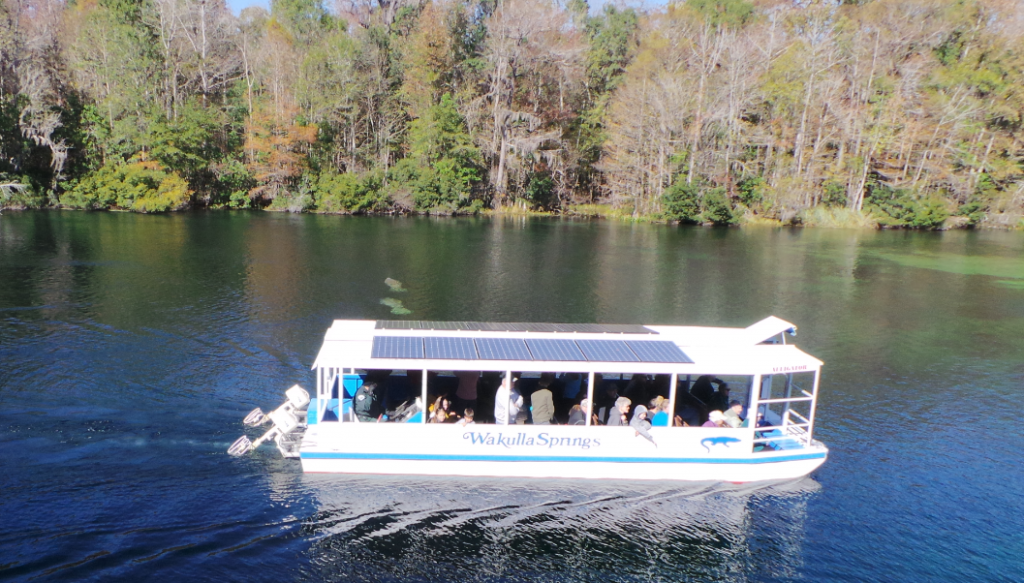
Daily river cruises on the Wakulla River are a great way to see manatees and other unique wildlife.
Photo: L. Scott Jackson
This year we’ll study four Panhandle water resources of regional significance – the Wakulla Springshed, St. Joe Bay, the Econfina Watershed, and Weeks Bay. Two are freshwater streams and their watersheds; two are bays. Two are in the eastern Panhandle; two are in the west (one even in Alabama). Two are being offered in the spring, the other two in the fall.
First up is the Panhandle Outdoors LIVE! – Wakulla Springshed School on March 1-2. It will base out of the magnificent “Old Florida” Wakulla Springs Lodge south of Tallahassee, and feature field trips to Leon Sinks Geological Area, Cherokee Sink and the Wakulla River – concluding with an optional paddle downriver from Wakulla Springs through a transition of ecosystems to historic Fort San Marcos de Apalachee, where the Wakulla joins the St. Marks River.
Next up, on April 4-5, is Panhandle Outdoors LIVE! – Weeks Bay Watershed School that will base out of the Episcopal Beckwith Camp and Retreat Center on Weeks Bay in Fairhope (Baldwin County) Alabama. This second watershed school will focus on the Weeks Bay National Estuarine Research Reserve, and feature a demonstration of oyster farming and a kayak paddle trip.
For more detailed information, and to register, for the Wakulla Springshed School visit – http://pol-2016-wakulla-springshed.eventbrite.com
For more information on the April overnight school to Weeks Bay National Estuarine Research Reserve contact Rick O’Connor at roc1@ufl.edu
For more information on the August day school on the Ecofina River contact Laura Tiu at lgtiu@ufl.edu
For more information on the September overnight school to St. Joe Bay contact Erik Lovestrand at elovestrand@ufl.edu










